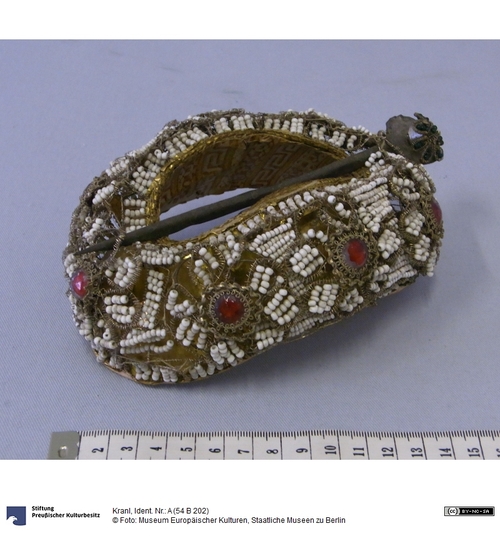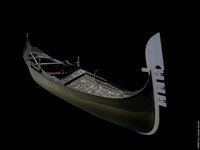Das ovale, gewölbte, oben offene Krönl besteht aus einem Pappring, der innen mit rot gemustertem Papier, außen mit Goldfolie überzogen ist. Über der Goldfolie wölbt sich ein Geflecht aus leonischem Draht und porzellanfarbenen Perlen. Das Geflecht bildet 8 Rosetten mit je einem roten Stein.
Der dazugehörige Haarpfeil ist aus Blech rinnenartig gebogen und endet oben mit einer runden Platte. Auf dieser ist eine Rosette aus leonischem Draht und grünen Perlen montiert.
Kranl oder Krönl wurden von Mädchen im ländlichen Bereich seit dem Ende des 18. Jh. getragen. Sie waren Zeichen der Keuschheit und bedeckten das Haarnest oder den Haarknoten. Der Haarpfeil diente der Befestigung.
en

